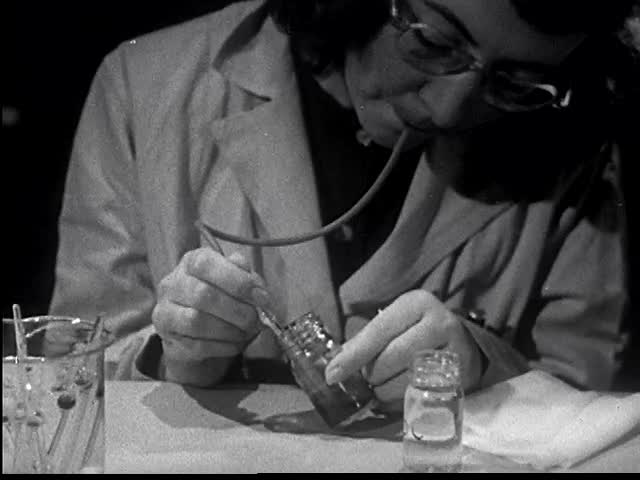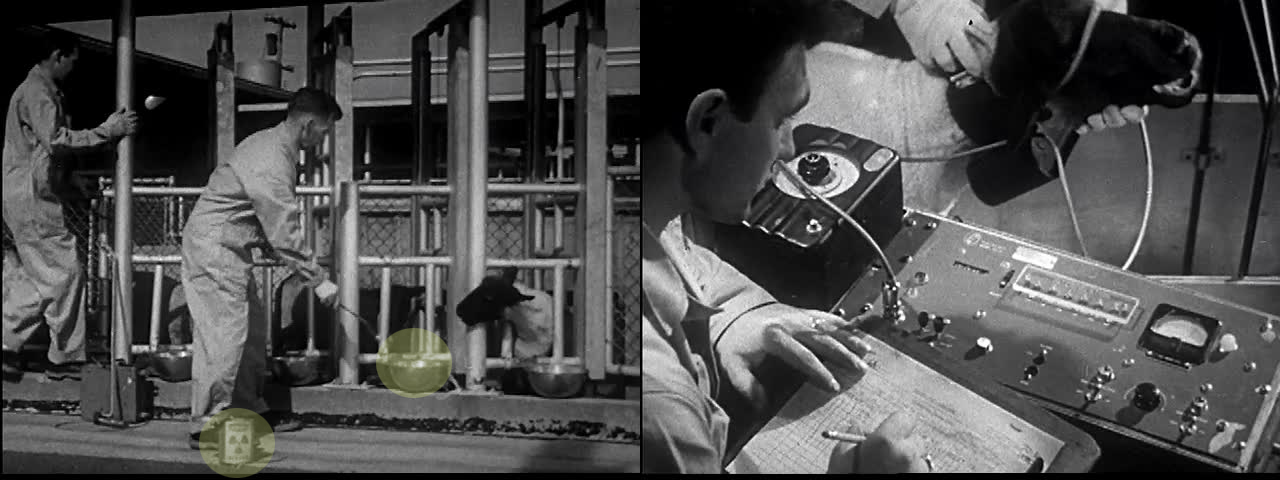The Center is continuing its research on mutation breeding that we began back in 2010. In November we will install a triptych installation at the San Jose Museum of Art which will display the past present and future of radiation breeding.
Most of our research has centered on the history of radiation breeding in plants. There is an enormous set of records in the IAEA’s Mutation Variety Database. Many of these “useful mutants” are commonplace in human food systems all over the planet.
In comparison we have found relatively less information about radiation-bred animals. While we have not completed an exhaustive literature review, we have not run into any documented radiation breeding / animal husbandry programs in the U.S. or elsewhere.
However, while conducting this radiation breeding research we ran into this curious film documented in the Prelinger archive:
The Magic of the Atom: The Atomic Zoo
Produced by Leo H. Handel with the technical assistance of the U.S. Automic Energy Commision and the Atomic Energy Project at UCLA
The first line of the film is “Peace time atomic energy has found its way into the Animal Kingdom.”
Two of the questions posed in the video “relating to our daily living” are
“How does food, containing radioactive material, effect animals?” and “What effect, if any, has an atomic processing plant on the vegetation and livestock in its area?”
The narrator goes on to explain that: “The overall atomic biological research program includes both plant and animal work and it is hoped that it will result in major gains toward understanding plant and animal life processes and soil-plant relationships, which combined, give you improved agricultural production.”
EXPERIMENTS IN THREE CHAPTERS
Chapter 1: Experimenting with Sheep
“Scientists at AEC’s (Atomic Energy Commission) Hanford Works are gathering vital information to safeguard the important lamb and wool indsutry in that area. Since waste products, such as radioactive iodine from chimney stacks of atomic plants often settle on soils and vegetation eaten by sheep, it is important to know, the exact effect this has on them.”
“Sheep are feed food pellets containing varying amounts of radioactive iodine…..the offspring of the sheep will also be studied for several generations to determine the physical changes that may have been caused by the effect of radiation on the first group of sheep.”
One wonders if the AEC scientist were keeping their eyes out for “interesting” phenotypical variation in the lab subjects for the purposes of breeding. Noting and back breeding mutants is what mutation breeding in plants is all about. However, there are ethical and (one would guess) morphological / developmental differences in exposing plants and animals to radiation for the purposes of creating “variation”. Were any of the genetic lines of the later generations of sheep retained? If anyone knows of any historical radiation breeding experiments on animals we would love to be informed. Please email us.

Yum…….radioactive sheep blood being transferred through the use of a MOUTH PIPETTE!
Chapter 2: Egg Formation
“This hen is receiving a feeding of radioactive calcium and phosphorous….”
“These experiments are aimed at gathering vital data about eggs, universal food products. Perhaps the knowledge may lead to better methods of feeding hens, so that some day we have a bigger production of more nutritious eggs.”
“Such fascinating research is attracting more and more young scientists and technicians into the atomic energy field.”
Chapter 3: Radioactive Fish
“At Hanford a small fraction of the Columbia River water is pumped through the giant Plutonium producing reactors to carry off heat generated by the production processes. This activity makes the minerals in the water slightly radioactive.”
“After being stored in retention basins long enough for most of the radioactivity to dissipate, the water is dumped back into the river. What effect do the remaining radioactive materials have on the river and its plant, animal and fish life?”
“From this and many more tests the effect of radioactive material upon fish and aquatic plant life will be determined for the benefit of all mankind, through the magic of the atom.”



